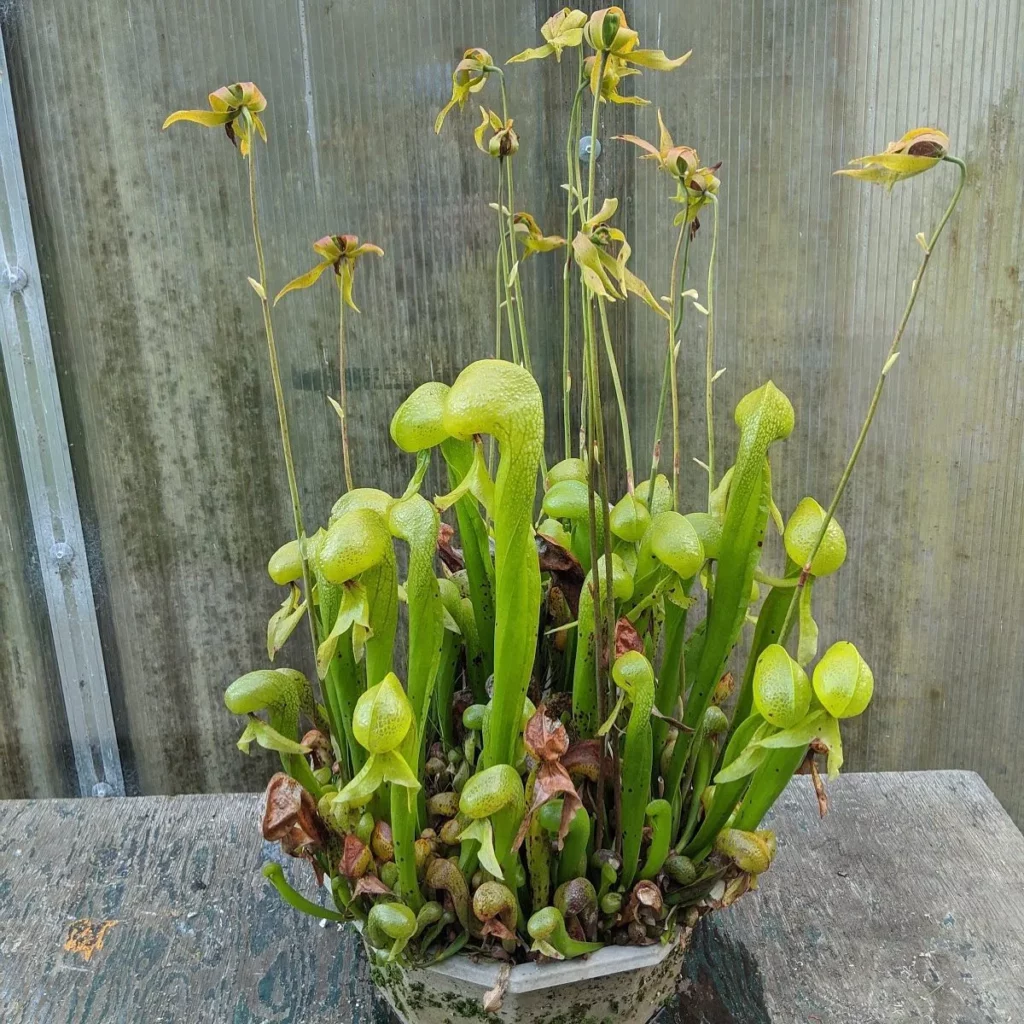The Highland Pitcher Plant, also known as Nepenthes veitchii plant is truly a sight to behold. Its unique and captivating appearance is sure to catch your eye. The plant’s peristome, the rim of the pitcher, is vertical, flared, and adorned with a mesmerizing combination of golden brown and red pin striping, resembling candy canes. The leaves, tendrils, and pitchers are covered in coarse brown hair, giving them a fuzzy-to-hairy texture that adds to their mysterious allure.
Appearance of Nepenthes veitchii
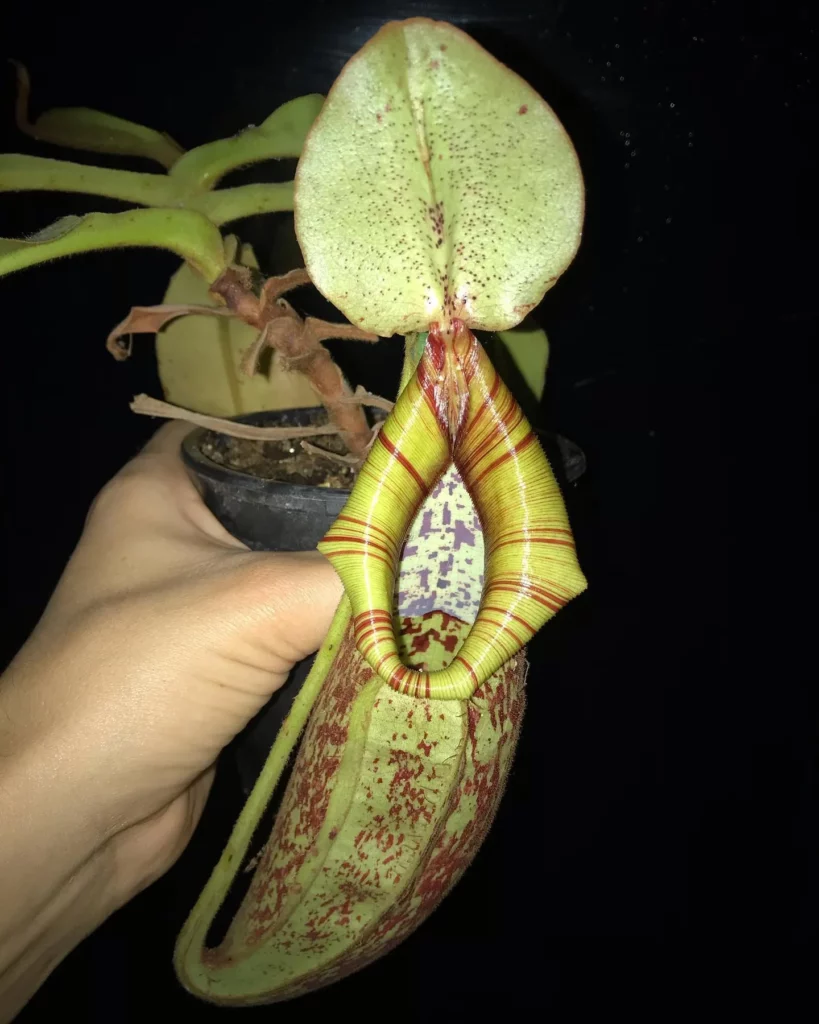
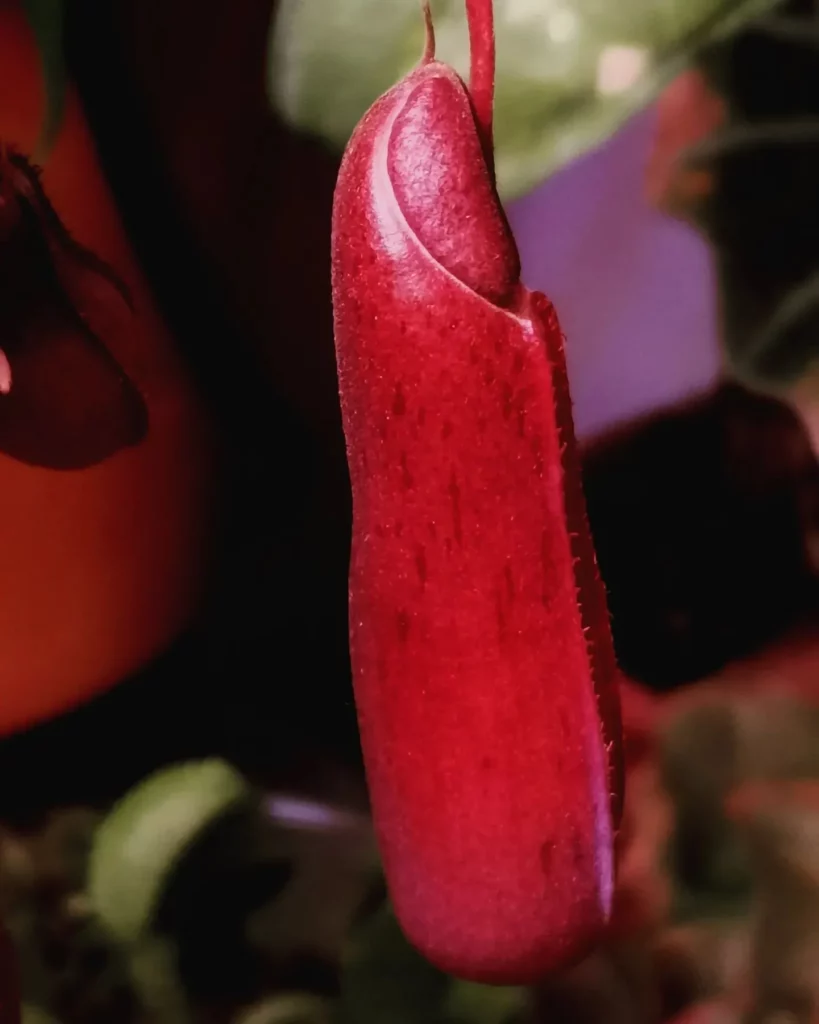
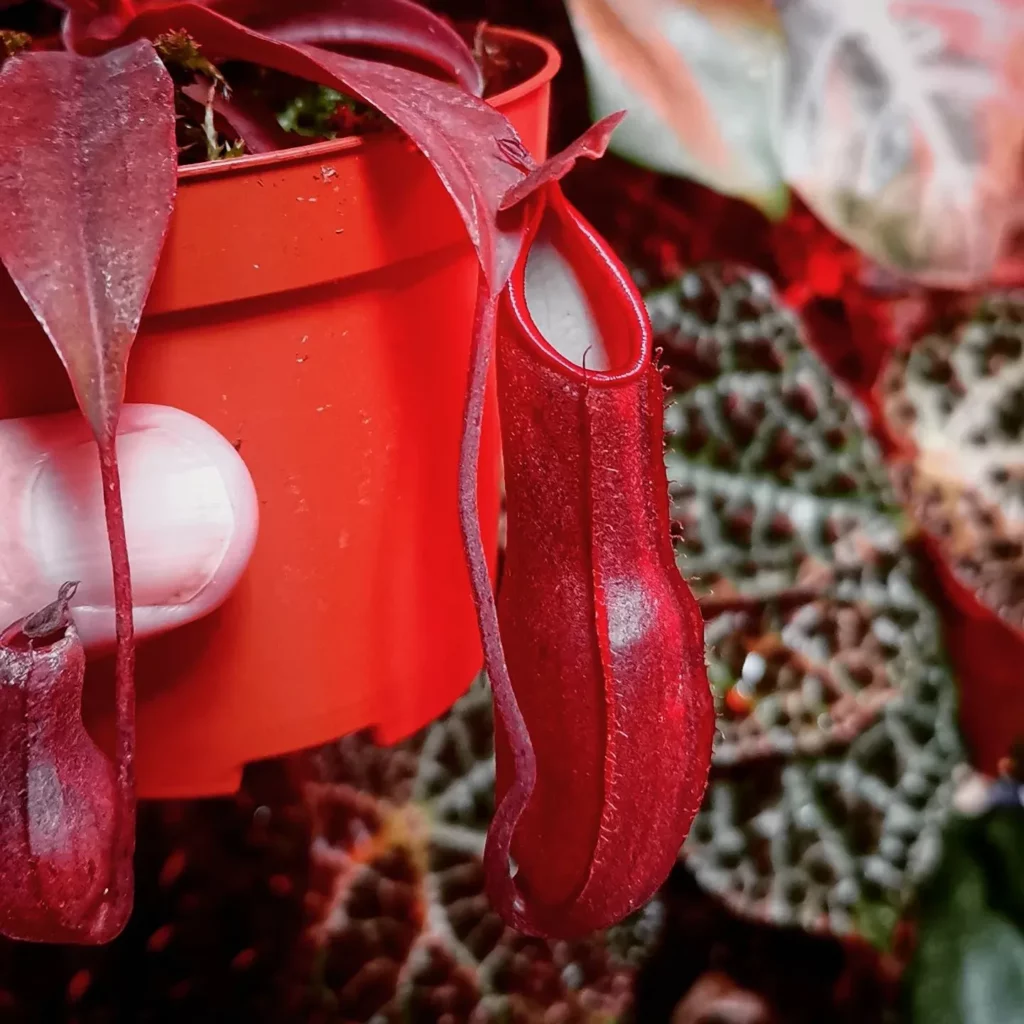
The lower pitchers of Nepenthes veitchii are tan in color and have a squat shape, capable of holding large amounts of digestive fluids. These pitchers also feature pronounced wings on the front, adding an elegant touch to their overall appearance. Inside the pitchers, you’ll notice light red blotches that create a striking contrast against the backdrop of the fluid-filled chamber.
Overall, the Nepenthes veitchii plant’s appearance is truly one-of-a-kind, making it a popular choice among plant enthusiasts and collectors who appreciate its remarkable features and characteristics.
Light Requirements for Nepenthes veitchii
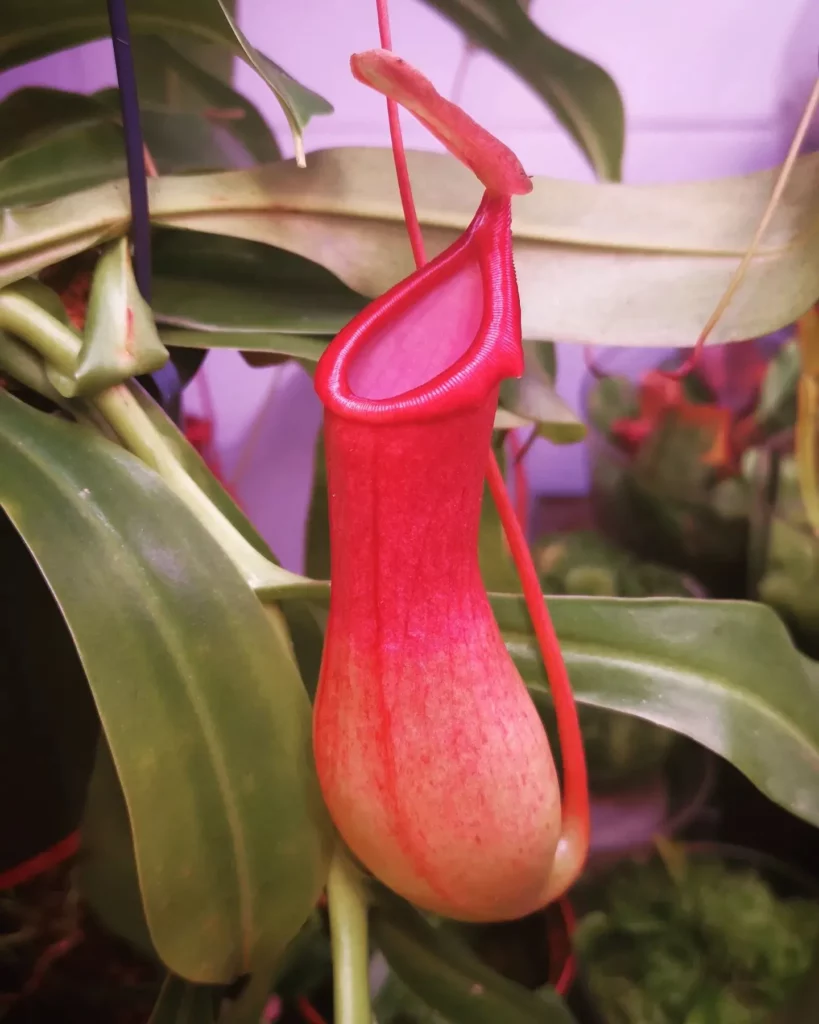
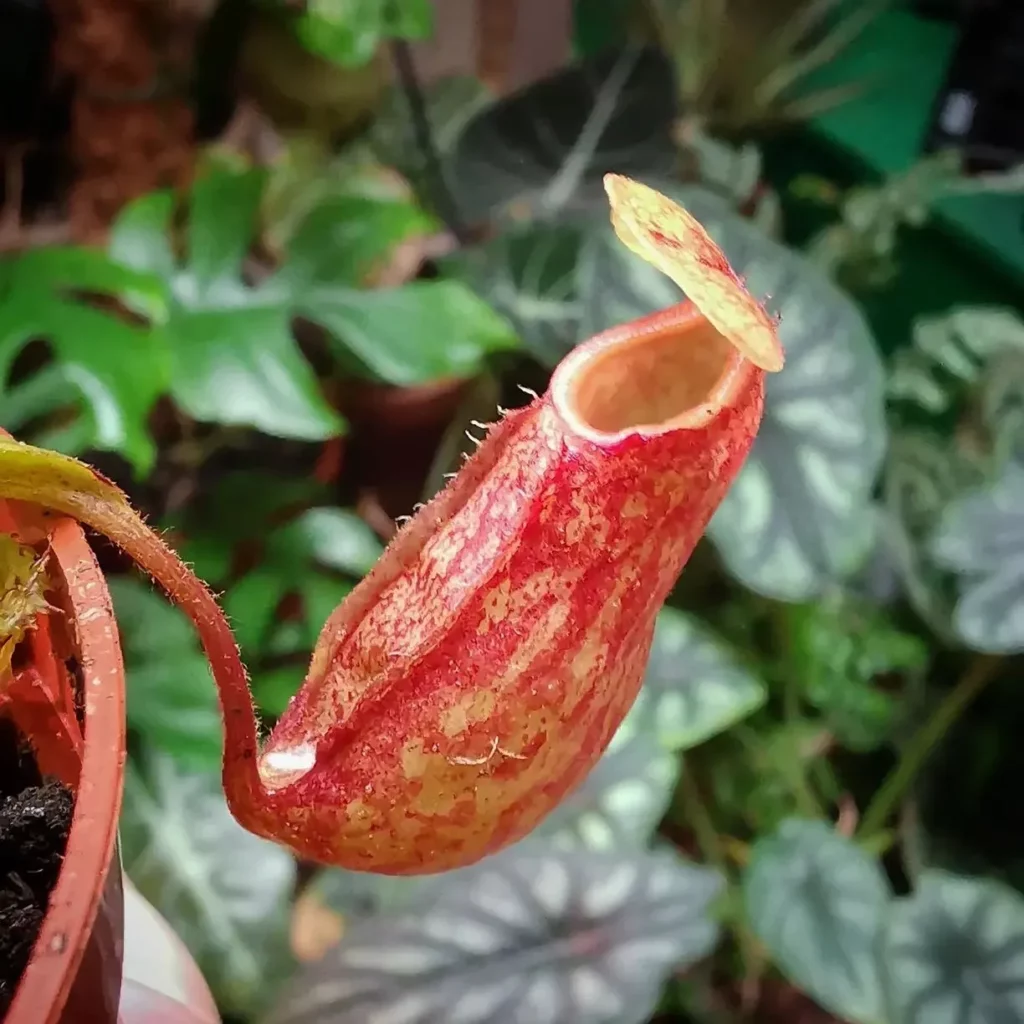
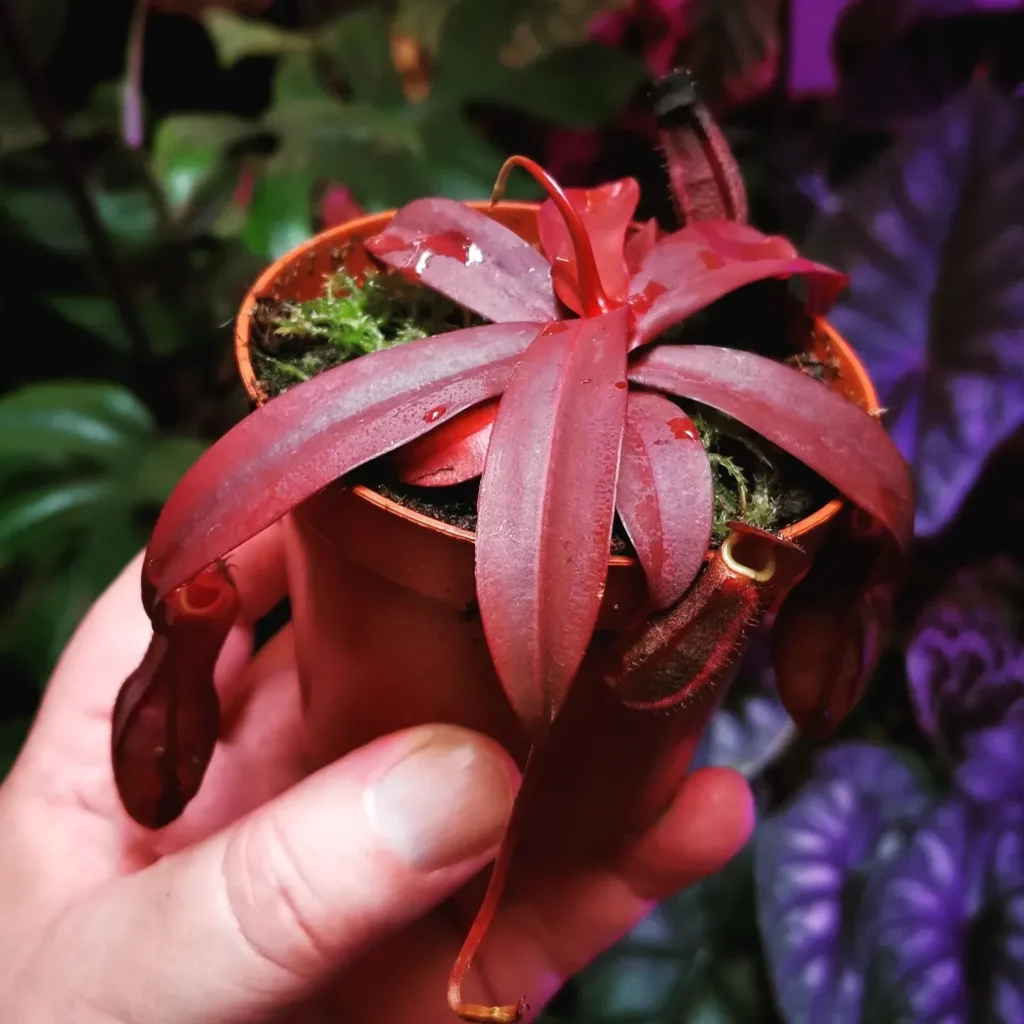
Nepenthes veitchii, the Highland Pitcher Plant, thrives in bright, indirect light. Whether you choose to grow it indoors or outdoors, providing the right amount of light is essential for its growth and well-being.
If you are growing Nepenthes veitchii indoors, you can use artificial grow lights to mimic the intensity and spectrum of natural light. LED grow lights are a popular choice, as they are energy-efficient and provide the necessary light wavelengths for the plant’s photosynthesis.
Alternatively, if you have a well-lit area with sufficient natural light, you can place your Nepenthes veitchii near a window. Ideally, it should receive bright and indirect sunlight, as direct sunlight can scorch the plant’s leaves. East or west-facing windows are often optimal for providing the right amount of light.
Highland varieties of Nepenthes veitchii may require extra attention to their light requirements. In their natural habitats, they often grow in areas with limited access to trees for climbing. Therefore, ensuring they receive adequate light is crucial for their growth and pitcher development.
To supplement the light levels for highland varieties, you can consider using additional grow lights or adjusting the placement of the plant near the window to maximize exposure. The goal is to provide a suitable light intensity for the plant’s photosynthesis process and overall growth.
Watering Nepenthes veitchii
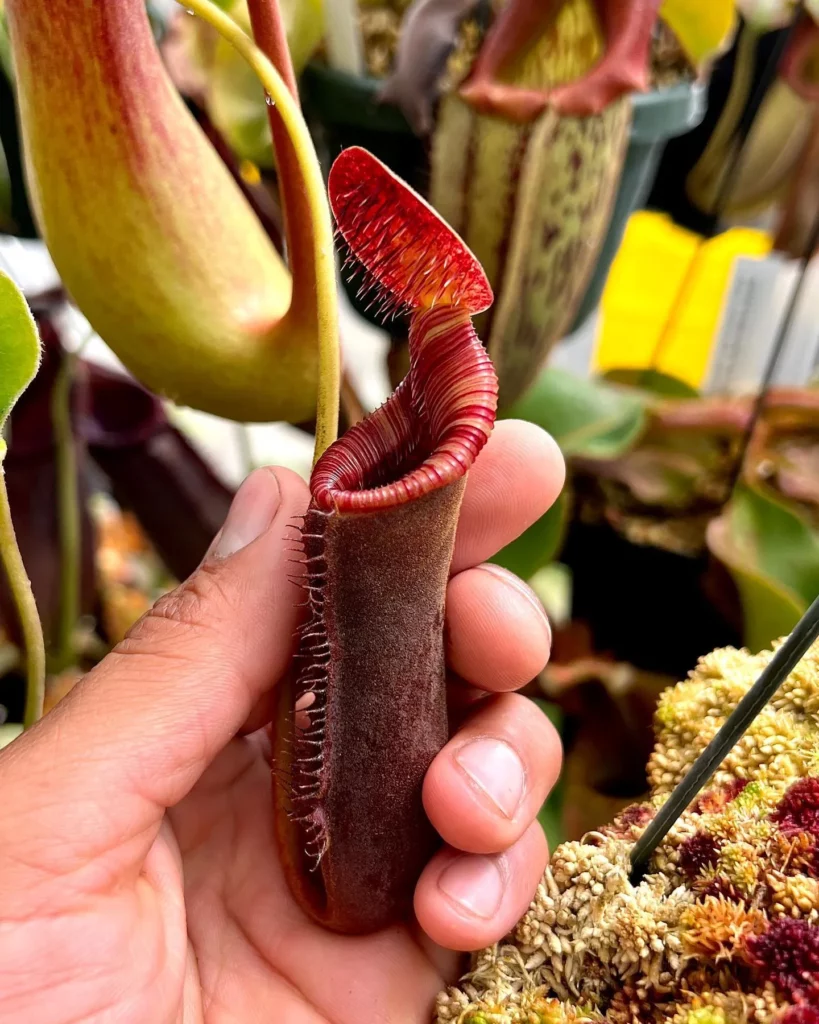
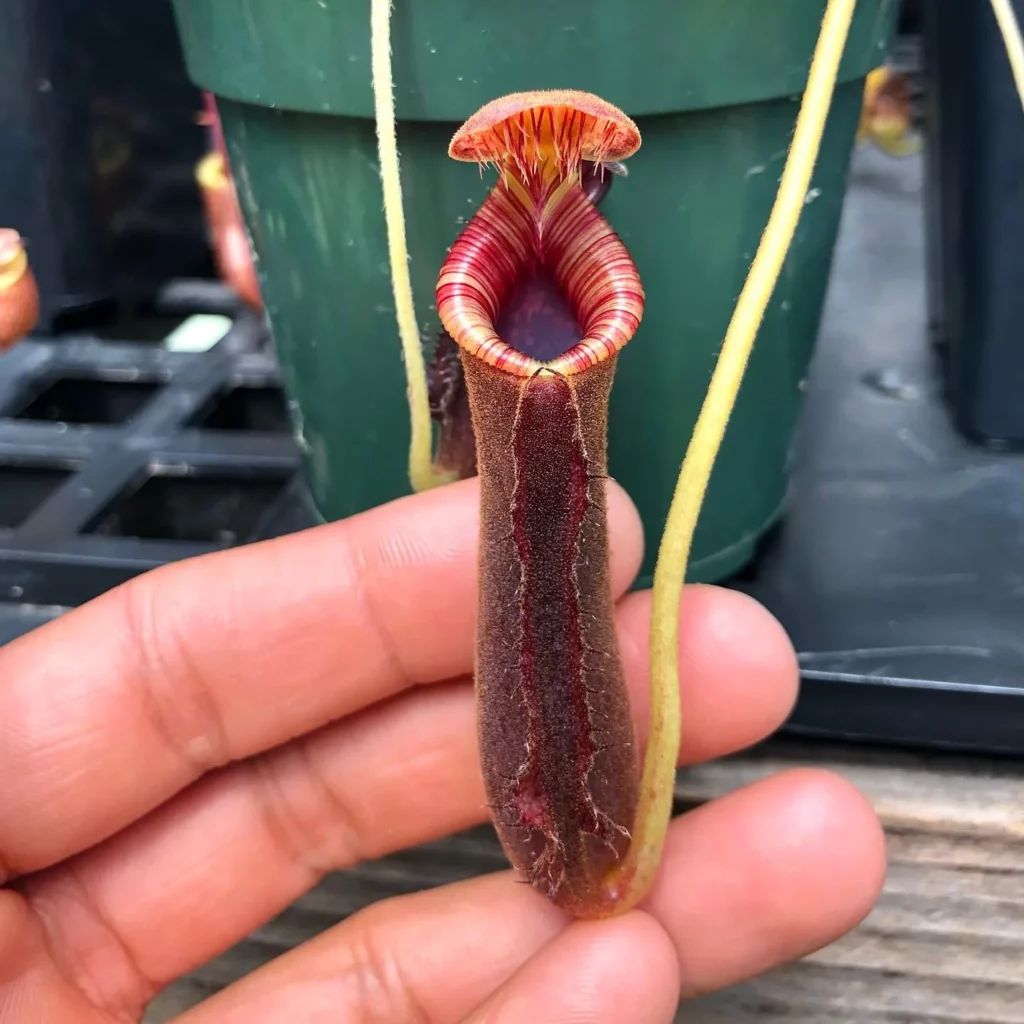

Proper watering is essential for the health and vitality of your Nepenthes veitchii. As a unique and exotic plant, it requires a careful balance of moisture to thrive.
To ensure optimal growth, it is important to keep the potting mixture moist without allowing it to become waterlogged. Highland varieties of Nepenthes veitchii prefer slightly drier conditions, while lowland varieties can tolerate more moisture.
A good rule of thumb is to allow the potting mixture to start drying out between waterings. Closely monitor the moisture levels by gently touching the surface of the soil to determine if it feels dry or slightly damp. Adjust the watering schedule accordingly to maintain the ideal moisture balance.
Fertilizing Nepenthes veitchii
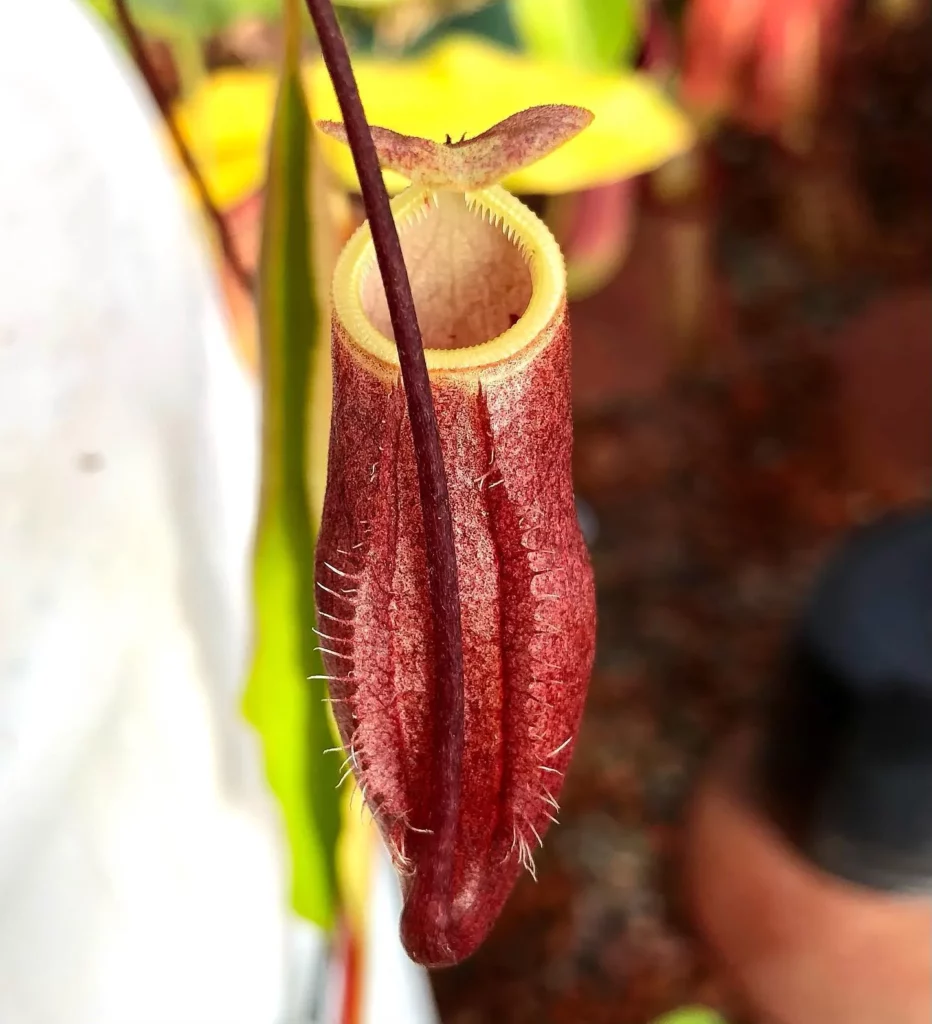
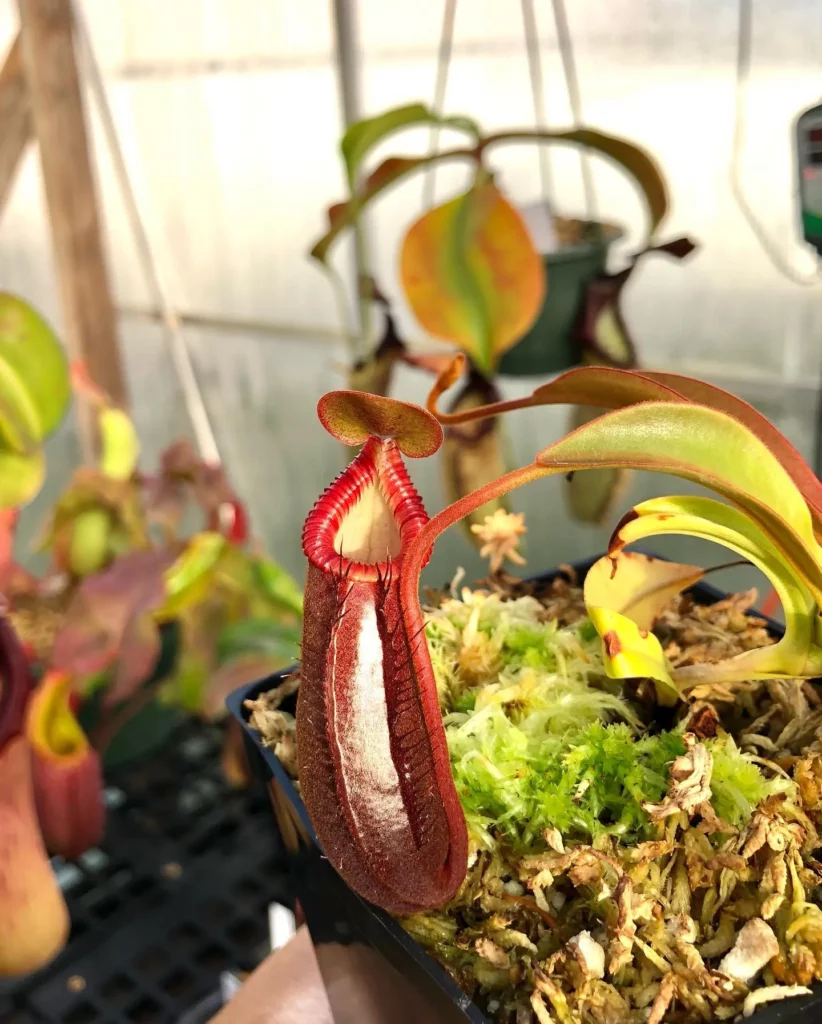
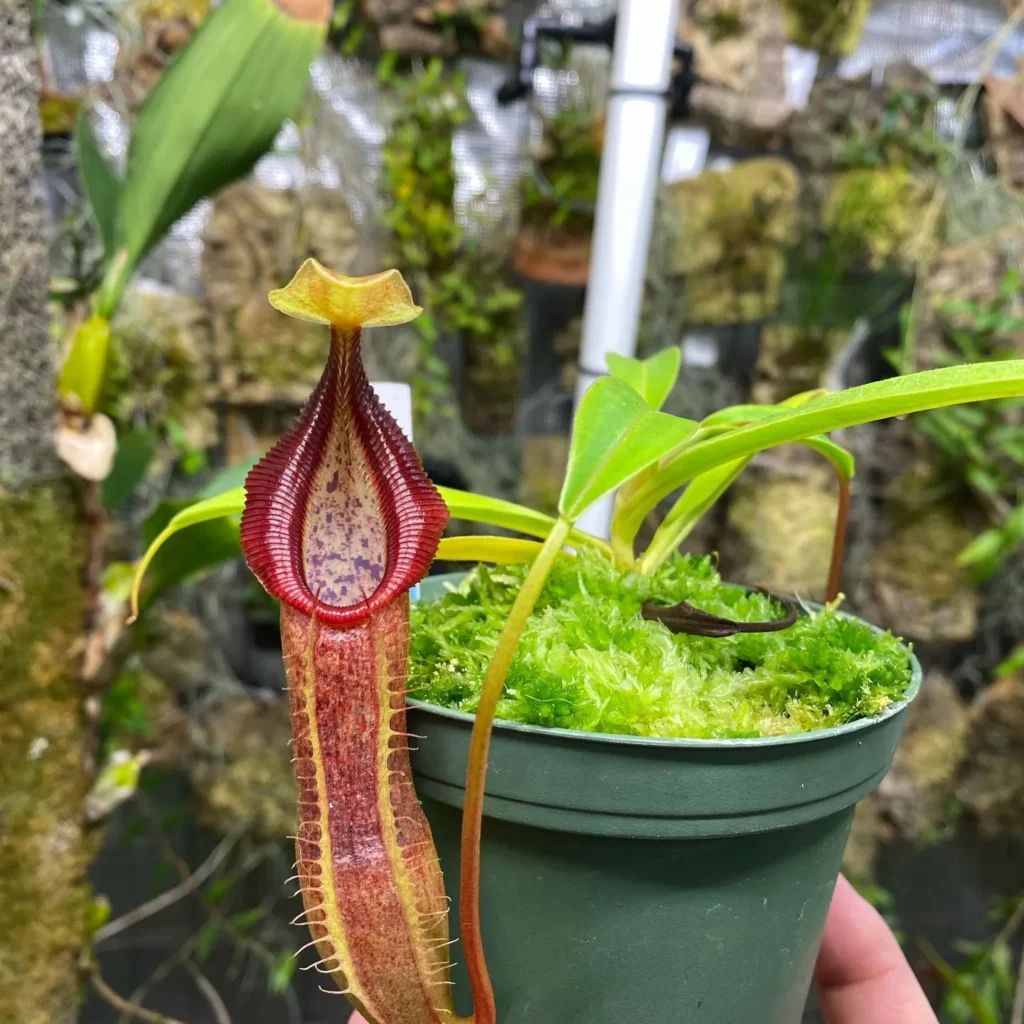
As a carnivorous plant, Nepenthes veitchii derives nutrients from the insects caught in its pitchers. However, when cultivated, it can benefit from supplemental feeding to ensure optimal growth and development. Fertilizing Nepenthes veitchii requires special consideration due to its unique nutrient requirements.
To provide the necessary nutrients, it is recommended to use a specialized carnivorous plant fertilizer. This type of fertilizer is specifically formulated to be low in nutrients while being rich in essential trace elements that are beneficial for the plant’s health. By using carnivorous plant fertilizer, you can help replicate the natural nutrient balance that Nepenthes veitchii would typically obtain from its insect prey.
When fertilizing, it is important to feed Nepenthes veitchii sparingly to avoid overfertilization, which can harm the plant’s sensitive roots. Overfertilization can lead to nutrient burn and damage the unique pitcher structures of the plant. Following the manufacturer’s instructions for dosage and frequency is crucial to maintain a balanced nutrient supply.
When applying the fertilizer, it’s best to dilute it with water according to the product’s directions. Gently pour the diluted fertilizer onto the potting mixture, taking care to avoid directly contacting the pitchers or leaves. This helps prevent any potential damage to the sensitive structures of the plant.
In addition to supplementing with carnivorous plant fertilizer, remember that Nepenthes veitchii still relies on capturing and digesting insects. Feeding the plants with insects is not required but can be an interesting and educational activity. However, caution should be exercised to avoid excessive feeding, which may overload the plant’s digestive capabilities.
Potting Nepenthes veitchii
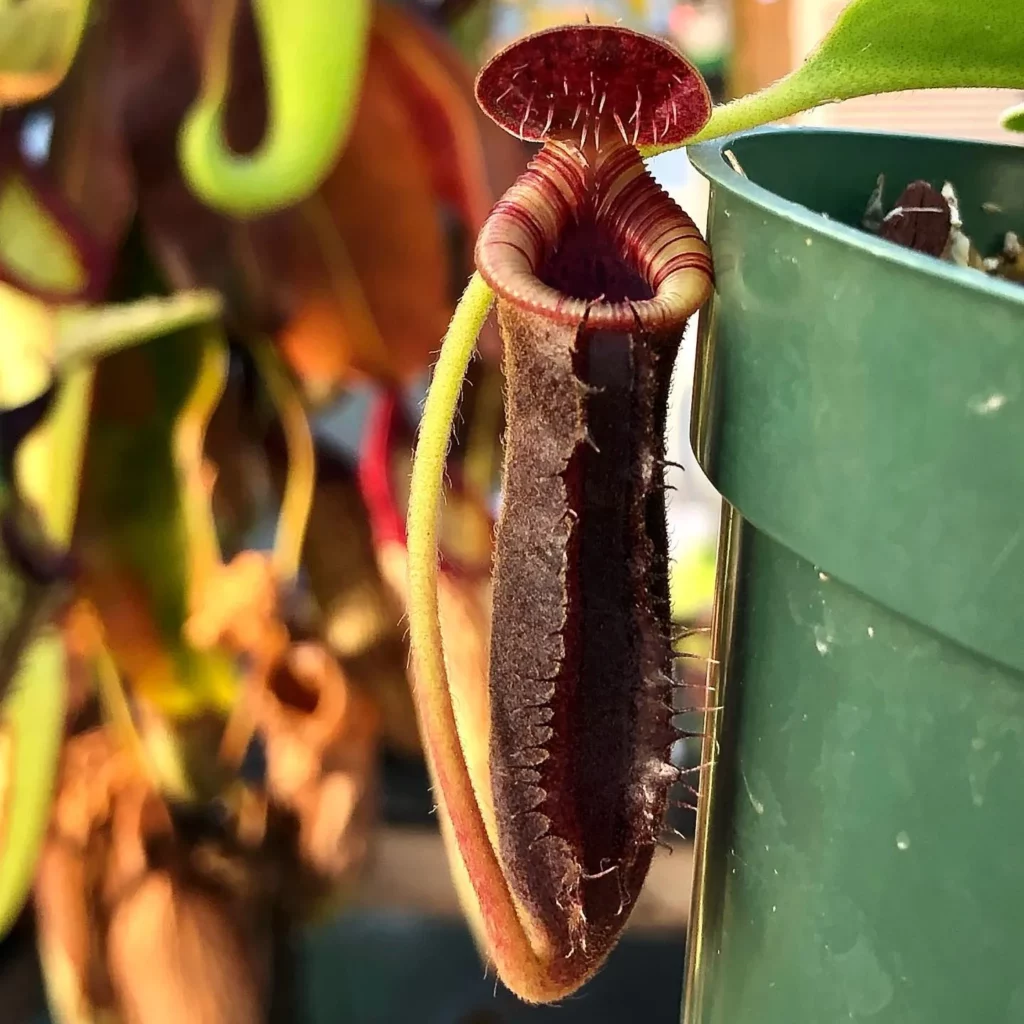
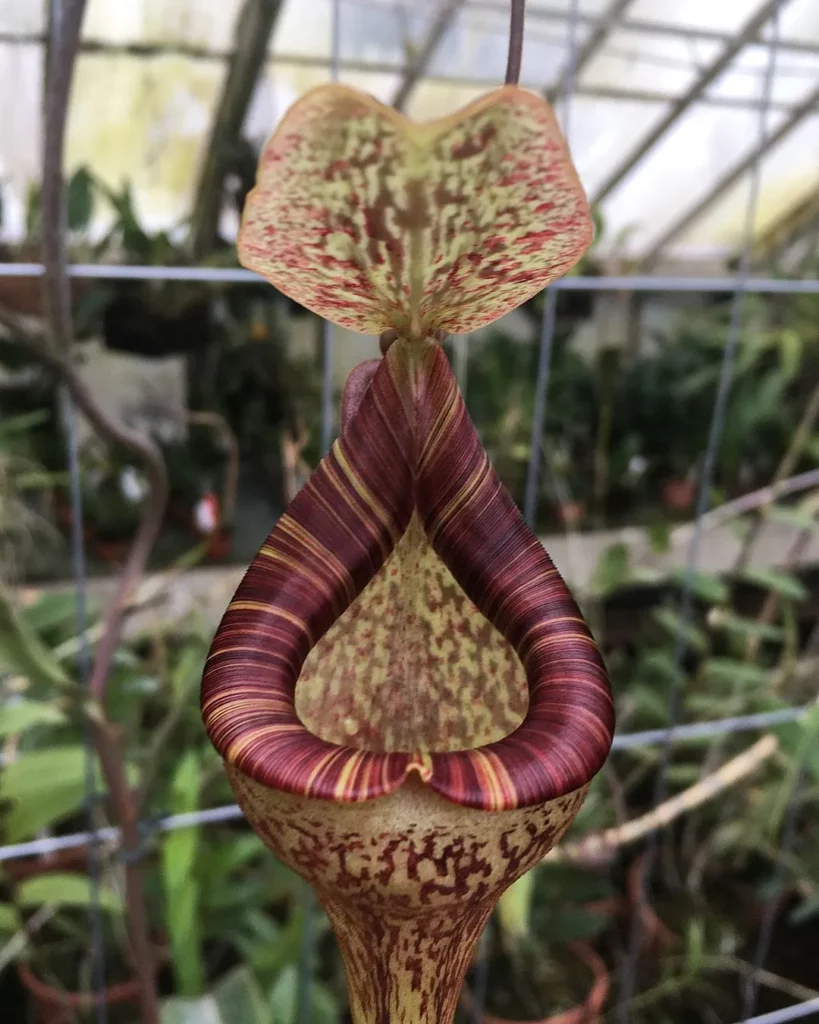
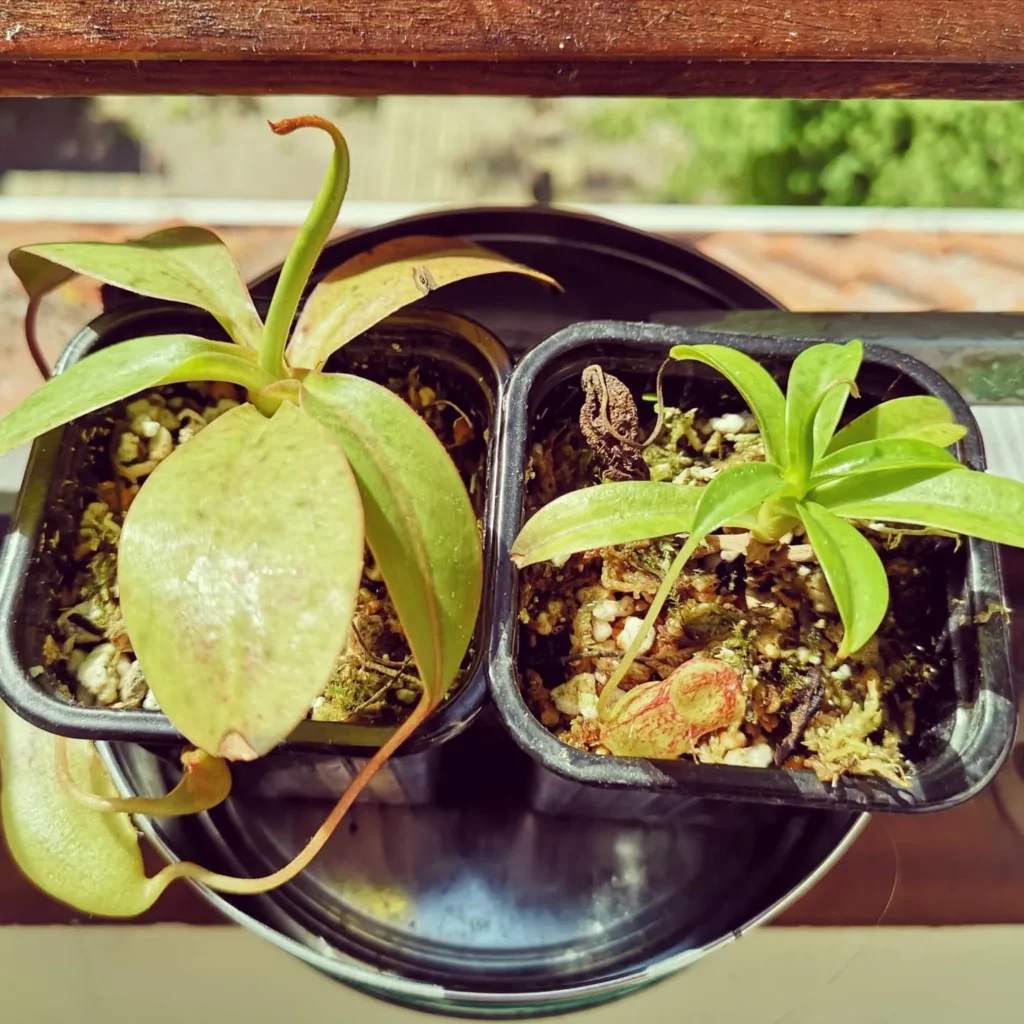
When potting your Nepenthes veitchii, it’s important to choose the right container and potting medium to ensure its health and growth. A well-draining mixture is ideal, consisting of sphagnum moss, perlite, and orchid bark. This combination allows for proper airflow and prevents waterlogging, which can lead to root rot.
Make sure to select a container that accommodates the plant’s root system and provides room for growth. A suitable container should have drainage holes to allow excess water to escape and prevent water buildup. This aids in avoiding overwatering and ensures proper moisture balance for your Nepenthes veitchii.
Repotting may be necessary when your plant outgrows its current container or when the potting medium becomes overly decomposed. During the repotting process, handle the plant with care to avoid damaging the delicate pitchers and roots. Transplanting into a slightly larger container with fresh potting mixture can provide the plant with the space and nutrients it needs to continue thriving.
Propagation of Nepenthes veitchii
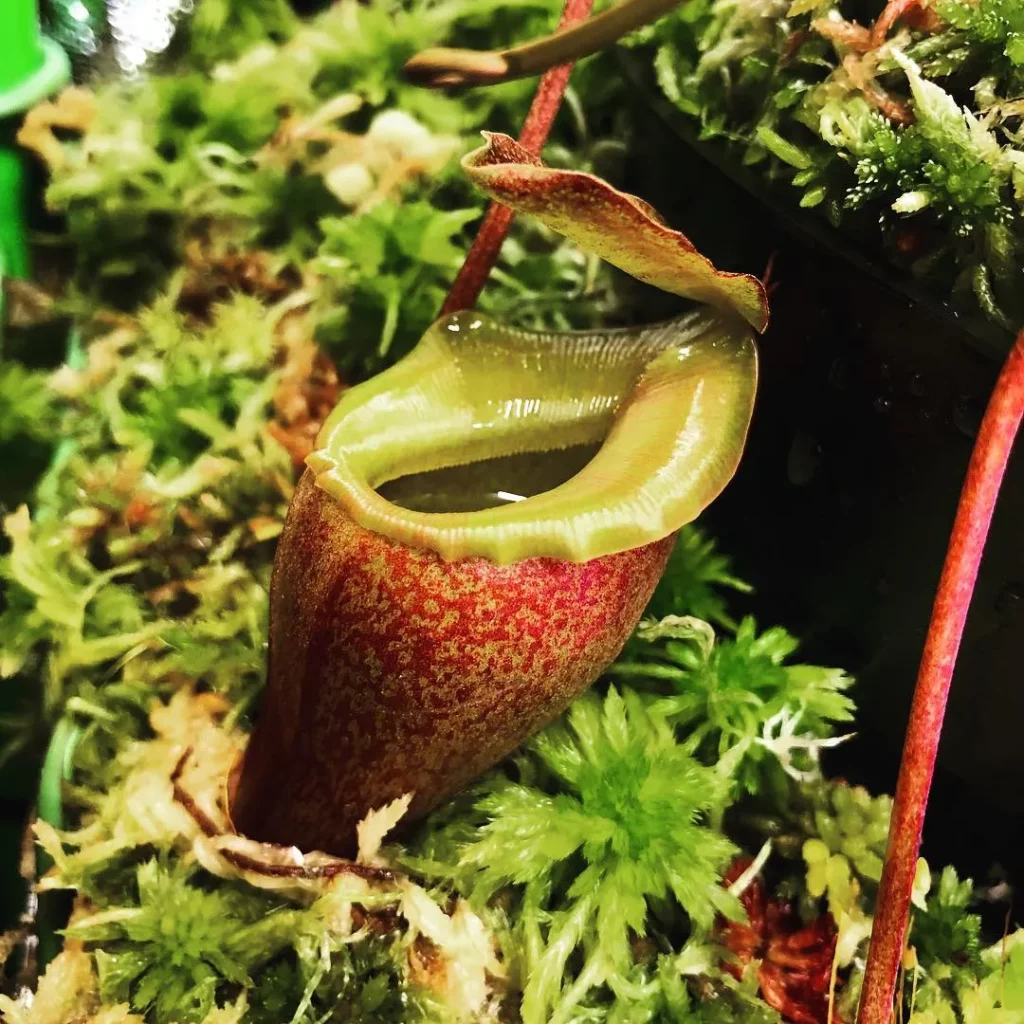
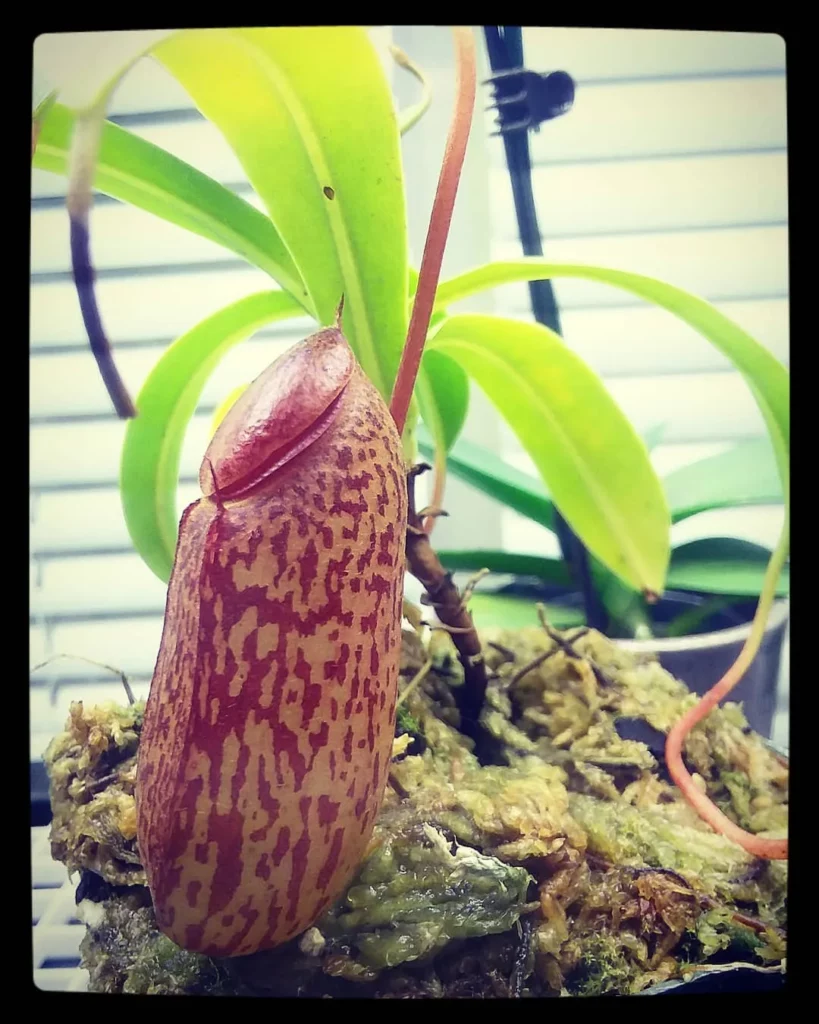
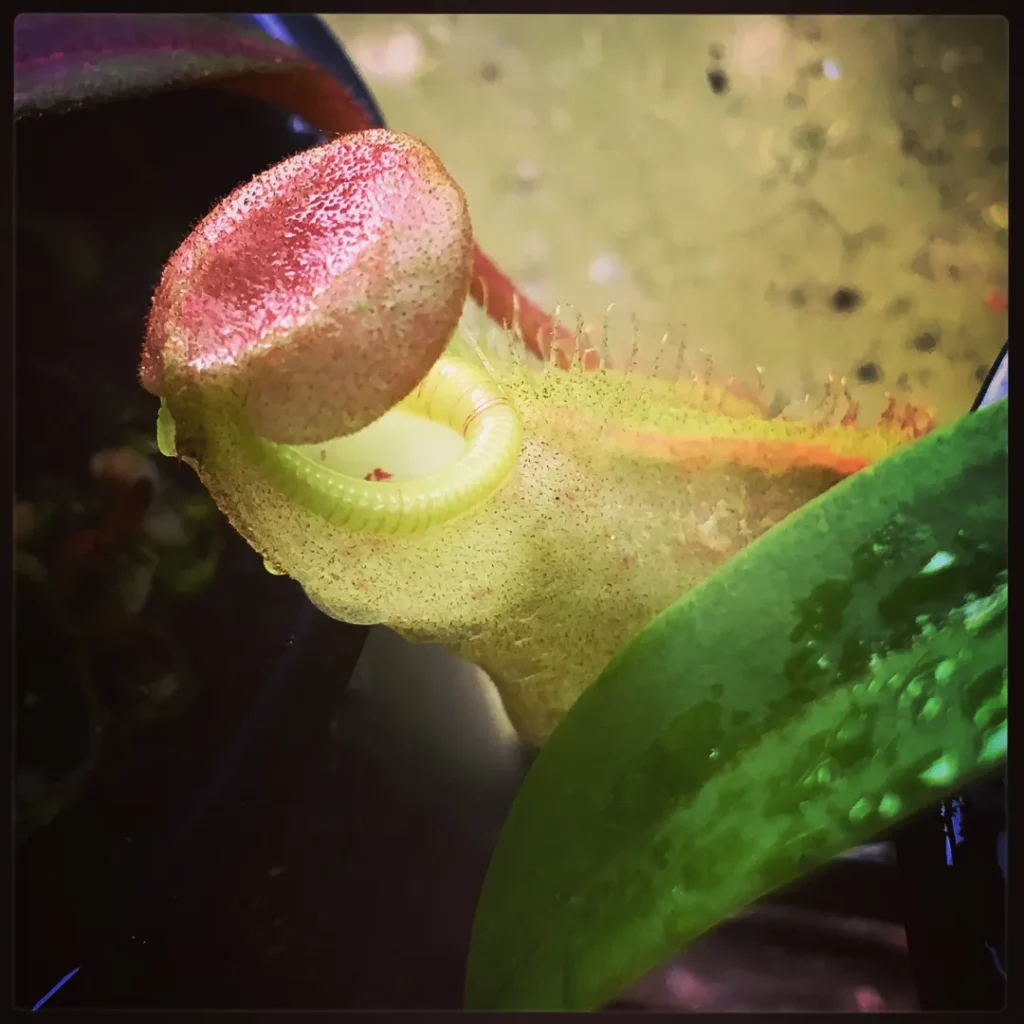
Nepenthes veitchii, the beautiful and exotic Highland Pitcher Plant, can be propagated through a process called vegetative propagation, specifically using leaf cuttings. This method allows you to grow new plants from healthy, mature leaves of an existing Nepenthes veitchii.
When taking leaf cuttings, it is essential to select leaves that are free from any signs of damage or disease. Carefully cut a healthy leaf near the base, ensuring that the cutting includes a node. The node is a small bump on the leaf where new roots will develop.
To root the leaf cuttings, prepare a suitable medium, such as a mixture of sphagnum moss and perlite. Gently insert the cuttings into the medium, making sure that the node is partially buried. Provide a warm and humid environment to promote root development.
Patience and Proper Care
Propagation of Nepenthes veitchii can be a delicate process that requires patience. The success rate may vary, but with diligent care and favorable conditions, new plants can be established. Maintain a warm and humid environment, and mist the cuttings regularly without soaking them. Avoid direct sunlight, which can be harmful to the delicate cuttings.
During the propagation period, it is vital to monitor the moisture levels of the medium and ensure it remains consistently moist but not overly saturated. Adequate humidity is crucial for the development of healthy roots and new growth.
Once the cuttings start developing roots and new leaves, it is an indication that they have successfully taken root. At this stage, you can carefully transplant them into individual pots with a well-draining potting mix suitable for Nepenthes plants.
Growth and Development of Nepenthes veitchii
Nepenthes veitchii, the Highland Pitcher Plant, undergoes significant growth and development as it matures. Young plants may initially have small pitchers and less vibrant coloration. However, with time and proper care, they undergo remarkable transformations, resulting in larger pitchers with vivid colors and a prominent peristome, the rim of the pitcher.
During its growth stages, Nepenthes veitchii gradually reaches its full potential, displaying its unique beauty. As the plant matures, its pitchers become more elaborate, capturing the attention of enthusiasts and cultivators alike.
With the right conditions and care, Nepenthes veitchii will flourish, providing a captivating addition to any collection. Witness the remarkable growth and development of this extraordinary plant as it showcases its stunning pitcher formations and artistic patterns.
Pests and Diseases of Nepenthes veitchii
Nepenthes veitchii is a resilient plant, but it can still be prone to certain pests and diseases. It’s essential to keep an eye out for common pests that may affect your Nepenthes veitchii, such as aphids, spider mites, and mealybugs. Regular inspection is crucial in identifying any infestations early on.
To control these pests, you can opt for appropriate pest control measures. Insecticidal soap is a reliable option, as it effectively targets pests while being safe for your plant. Another natural and effective method is introducing natural predators, such as predatory insects or beneficial nematodes, which can help keep pest populations in check.
In addition to pests, Nepenthes veitchii can also face disease issues. Fungal infections are a common concern, particularly in high humidity or poor air circulation conditions. To prevent fungal infections, it’s important to maintain adequate humidity levels, ensuring they are not excessively high, and provide good air circulation around the plant. These measures significantly reduce the risk of fungal diseases.
What Does Nepenthes veitchii Eat?
As a carnivorous plant, Nepenthes veitchii has a unique way of obtaining nutrients. It primarily feeds on insects and other small arthropods, making it an insectivorous species. The plant’s impressive pitchers are specialized structures designed to attract and trap prey.
When an unsuspecting insect lands on the peristome, the flared and golden-brown structure surrounding the pitcher’s opening, it becomes lured into the depths of the plant. The interior of the pitcher secretes a digestive fluid that contains enzymes. Once the prey ventures further into the pitcher, it becomes trapped and submerged in the fluid, unable to escape.
Over time, the enzymes in the digestive fluid break down the prey’s tissue, slowly digesting it. This process allows Nepenthes veitchii to extract vital nutrients, such as nitrogen and phosphorus, from the dissolved prey. These nutrients supplement the plant’s growth and overall development.
Unique Variants of Nepenthes veitchii
One of the fascinating aspects of Nepenthes veitchii is its wide range of genetic diversity, which has resulted in the cultivation of various unique variants. Each variant possesses its own special characteristics, including distinctive peristome shapes, colors, and body patterns. These variants are a testament to the remarkable adaptability and evolution of this magnificent plant.
Through the efforts of horticulturalists, the availability of Nepenthes veitchii variants in the commercial market has increased. The use of horticultural seed and tissue-cultured clones has played a significant role in expanding the selection of these captivating variants. As a result, collectors and growers now have the opportunity to explore and enjoy the diverse array of Nepenthes veitchii variants.
Cultivating and nurturing these variants can be an exciting journey, as each one offers a unique and stunning beauty. Whether you are drawn to the vibrant hues, intricate patterns, or unusual shapes, there is a Nepenthes veitchii variant that will captivate your imagination. As you delve into the world of these mesmerizing plants, you will discover the endless possibilities and surprises that await.
FAQ
What is a Highland Pitcher Plant (Nepenthes veitchii)?
Highland Pitcher Plant, also known as Nepenthes veitchii, is an exotic tropical pitcher plant native to north-western Borneo and parts of Kalimantan. It is known for its unique appearance and ability to capture insects in its pitchers.
What are the features and characteristics of Nepenthes veitchii?
Nepenthes veitchii has a striking appearance with a vertical, flared, and golden brown peristome. Its leaves, tendrils, and pitchers are covered in coarse brown hair, giving them a fuzzy-to-hairy texture. The lower pitchers are tan and can hold large amounts of digestive fluids.
What are the light requirements for Nepenthes veitchii?
Nepenthes veitchii requires bright, indirect light to thrive. It can be grown indoors under artificial grow lights or in a well-lit area with sufficient natural light. Highland varieties may have a harder time finding trees to climb, so providing adequate light is essential for their growth.
How should I water Nepenthes veitchii?
Watering Nepenthes veitchii can be tricky as it requires a balance of moisture. It is important to keep the potting mixture moist but not waterlogged. Highland varieties prefer slightly drier conditions, while lowland varieties can tolerate more moisture. It is generally recommended to let the potting mixture start to dry between waterings, but closely monitoring the moisture levels and adjusting the watering schedule accordingly is crucial for the plant’s overall health.
How do I fertilize Nepenthes veitchii?
Nepenthes veitchii is a carnivorous plant that derives nutrients from insects caught in its pitchers. However, in cultivation, it can benefit from supplemental feeding. It is recommended to use a specialized carnivorous plant fertilizer that is low in nutrients but rich in trace elements. Feeding should be done sparingly to avoid overfertilization, which can damage the plant’s sensitive roots.
What kind of potting medium should I use for Nepenthes veitchii?
Nepenthes veitchii can be potted in a well-draining medium, such as a mixture of sphagnum moss, perlite, and orchid bark. The plant should be placed in a container that allows for adequate root growth and has good drainage. Repotting may be necessary when the plant outgrows its current container or when the potting medium becomes overly decomposed. It is important to handle the plant with care during repotting to avoid damaging the delicate pitchers and roots.
How can I propagate Nepenthes veitchii?
Nepenthes veitchii can be propagated through vegetative means, such as leaf cuttings. Leaf cuttings are taken from healthy, mature leaves and can be rooted in a suitable medium. It is important to ensure that the cuttings have a node, which is where new roots will develop. Propagation can be a delicate process and requires patience. The success rate may vary, but with proper care and favorable conditions, new plants can be established.
How does Nepenthes veitchii grow and develop over time?
Nepenthes veitchii exhibits significant growth and development over time. Young plants may start with small pitchers and less vibrant coloration, but as they mature, the pitchers become larger, more colorful, and develop a pronounced peristome. With proper care and favorable conditions, Nepenthes veitchii can reach its full growth potential, showcasing its unique beauty.
What pests and diseases should I watch out for with Nepenthes veitchii?
Nepenthes veitchii can be susceptible to pests like aphids, spider mites, and mealybugs. Regular inspection and appropriate pest control measures, such as using insecticidal soap or natural predators, can help manage pest infestations. Diseases like fungal infections can occur due to high humidity or poor air circulation. Maintaining proper humidity levels and providing good air circulation can minimize the risk of these issues.
What does Nepenthes veitchii eat?
As a carnivorous plant, Nepenthes veitchii primarily feeds on insects and other small arthropods. The pitchers of the plant are specialized structures designed to attract and trap prey. Once an insect lands on the peristome and ventures into the pitcher, it becomes trapped in the digestive fluid and is slowly digested by enzymes secreted by the plant. The nutrients derived from the prey help supplement the plant’s growth and development.
Are there different variants of Nepenthes veitchii?
Yes, Nepenthes veitchii exhibits a wide range of genetic diversity, leading to various variants in cultivation. These variants have unique characteristics, such as different peristome shapes, colors, and body patterns. Horticultural seed and tissue-cultured clones have contributed to the availability of these variants in the commercial market. Collectors and growers can enjoy the variety of Nepenthes veitchii variants and appreciate the beauty that each one offers.




